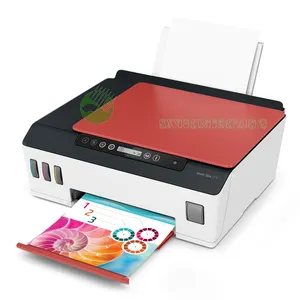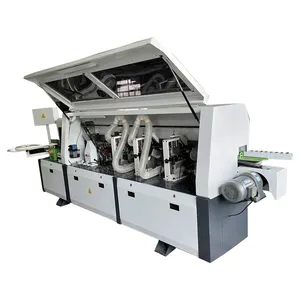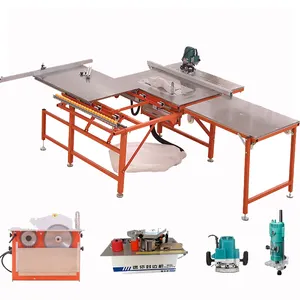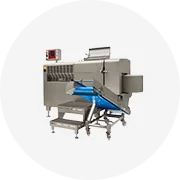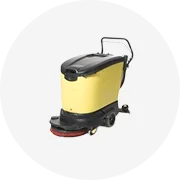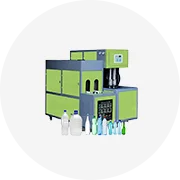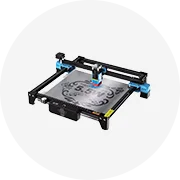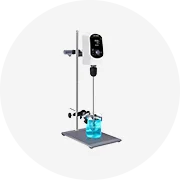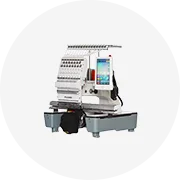Phổ biến trong ngành của bạn

Bán buôn cpet container thực phẩm lò vi ba an toàn 2 3 khoang cpet khay trên chuyến bay phục vụ nhựa cpet khay thức ăn
0,05 US$ - 1,02 US$
Đơn hàng tối thiểu: 50000 Cái


Leenol bền điện tử doanh thu thành phần PS nhựa chèn khay ESD chân không hình thành dùng một lần vỉ ESD đóng gói sản xuất
0,02 US$ - 3,00 US$
Đơn hàng tối thiểu: 2 Cái


Hỗ trợ tùy chỉnh thiết kế cấp thực phẩm bánh bao khay với ngăn đông lạnh vỉ khay để sử dụng bao bì
0,03 US$ - 0,10 US$
Đơn hàng tối thiểu: 30000 Cái


Leenol tùy chỉnh PS Đen ESD nhựa điện tử thành phần phần cứng chống tĩnh vỉ khay
0,50 US$ - 0,60 US$
Đơn hàng tối thiểu: 10 Cái


Hot bán trắng siêu thị lạnh dùng một lần nhựa bản đồ thịt khay
0,03 US$ - 0,05 US$
Đơn hàng tối thiểu: 500 Cái
Vận chuyển mỗi chiếc: 17,90 US$


Độ chính xác cao giá rẻ HDPE ép phun nhựa nóng bán tùy chỉnh OEM nhựa tiêm khuôn
0,85 US$ - 2,89 US$
Đơn hàng tối thiểu: 1000 Cái
Vận chuyển mỗi chiếc: 0,66 US$

Nhà sản xuất hàng đầu của Bánh Răng Nhựa chính xác, được biết đến với thiết kế sáng tạo
0,20 US$
Đơn hàng tối thiểu: 500 Cái
Vận chuyển mỗi chiếc: 7,81 US$

Dung Sai Cao Tùy Chỉnh Nhôm CNC Phay Gia Công Phần Đối Với Xe
16,00 US$ - 25,00 US$
Đơn hàng tối thiểu: 100 Cái

CNC tùy chỉnh dung sai cao Micro gia công dịch vụ gia công CNC biến đồng thau đồng kẽm mạ Bộ Phận Cơ khí
0,26 US$ - 5,60 US$
Đơn hàng tối thiểu: 1 Cái

Vật liệu an toàn nhiệt độ thấp Khoan Dung Ice Cube khay compartmented dung lượng lớn lưu trữ container
Sẵn sàng vận chuyển
0,78 US$
Đơn hàng tối thiểu: 2 Cái
Vận chuyển mỗi chiếc: 52,85 US$

Vật liệu an toàn nhiệt độ thấp Khoan Dung Ice Cube khay compartmented dung lượng lớn lưu trữ container
Sẵn sàng vận chuyển
0,78 US$
Đơn hàng tối thiểu: 2 Cái
Vận chuyển mỗi chiếc: 56,99 US$

Chất lượng cao tùy chỉnh sạc khay Khoan Dung nghiêm ngặt thấp moq nhanh chóng prototyping qua CNC gia công khoan dây EDM
5,00 US$ - 7,00 US$
Đơn hàng tối thiểu: 10 Cái
Các tìm kiếm liên quan:
khay nhựa trong suốt cho nồikhay nhựa 5 tầngkhay nhựa dùng trong công nghiệpkhay nhựa kích thước a4khay nhựa dập nổiđen dày chân không hình thành khay nhựakhay nhựa pp correxthiết kế khay nhựa dập nổibộ phận nhỏ khay nhựakhay nhựa a4khay nhựa cho dụng cụkhay pp đúc39 59cm kích thước khay nhựakhay nhựa và đóng góibộ phận lưu trữ khay nhựa

Dung sai cao Micro gia công dịch vụ CNC gia công biến đồng thau đồng bộ phận cơ khí
0,50 US$ - 0,90 US$
Đơn hàng tối thiểu: 1 Cái
Vận chuyển mỗi chiếc: 16,95 US$

CNC tùy chỉnh dung sai cao Micro gia công dịch vụ gia công CNC biến đồng thau đồng kẽm mạ Bộ Phận Cơ khí
0,50 US$ - 0,90 US$
Đơn hàng tối thiểu: 1 Cái
Vận chuyển mỗi chiếc: 15,89 US$

Bán Buôn Giá Rẻ Chổi Lau Xử Lý Stick Tự Nhiên Hộ Gia Đình Làm Sạch Sản Phẩm
0,10 US$ - 0,13 US$
Đơn hàng tối thiểu: 5000 Cái

Bán Buôn Cao-Hiệu Quả Bông Chủ Đề Lau Với PVC Tráng Bằng Gỗ Thanh Làm Sạch Xử Lý Loại Cho Nam Mỹ
0,10 US$ - 0,13 US$
Đơn hàng tối thiểu: 5000 Cái

plastic portable potty for sale or portable potty renal plastic toilet for construction site
699,00 US$ - 899,00 US$
Đơn hàng tối thiểu: 25 Đơn vị

70cm 90cm 110cm 120cm 125cm 130cm 150cm đồng bằng gỗ tự nhiên chổi Gậy xử lý với chủ đề ý hoặc cắt phẳng
0,11 US$ - 0,13 US$
Đơn hàng tối thiểu: 5000 Cái

Tùy chỉnh bán buôn Tự Nhiên Vòng thanh gỗ cho lau gỗ chổi xử lý
0,11 US$ - 0,13 US$
Đơn hàng tối thiểu: 5000 Cái

Bán Buôn Hộ Gia Đình Làm Sạch Bạch Đàn Bằng Gỗ Tự Nhiên Chổi Dính Chất Lượng Cao Tự Nhiên Bằng Gỗ Chổi Xử Lý
0,11 US$ - 0,13 US$
Đơn hàng tối thiểu: 5000 Cái

Bán Buôn Cây Lau Nhà Cây Lau Nhà Giá Rẻ Tay Cầm Chổi Bằng Gỗ Tự Nhiên Cho Sản Phẩm Vệ Sinh Gia Đình
0,11 US$ - 0,13 US$
Đơn hàng tối thiểu: 5000 Cái

Sản xuất tại Ý nhỏ gọn quay y tế sealers cho túi và Reels DIN 58953 7 2008 tiêu chuẩn ISO 11607 2 bao bì y tế
2.577,00 US$
Đơn hàng tối thiểu: 1 Cái
Các danh mục hàng đầu
Giới thiệu về khay nhựa dung sai cao
Alibaba.com cung cấp. khay nhựa dung sai cao để bán thông qua các nhà cung cấp, nhà sản xuất và nhà bán lẻ được chứng nhận khác nhau. Những chất lượng cao. khay nhựa dung sai cao có thể được đặt hàng trên trang web từ các nhà cung cấp hoặc nhà sản xuất. Có nhiều loại nồi hơi như vậy được tùy chỉnh để sử dụng trong các loại hệ thống nồi hơi khác nhau.
khay nhựa dung sai cao rất quan trọng đối với sự vận hành trơn tru của bất kỳ hệ thống đun sôi nào. Hầu hết các hệ thống nồi hơi được thiết kế để làm nóng nước và sau đó chuyển nó thành hơi nước. Sau đó, hơi nước được phân phối đến nơi ứng dụng của nó được mong muốn hoặc cần thiết. Hệ thống đun sôi là một hiện tượng phổ biến trong nhiều ngành công nghiệp cũng như gia đình. Kiểm tra các bộ phận khác nhau của nồi hơi có sẵn trên Alibaba.com.
Nồi hơi có các yếu tố chính bao gồm buồng đốt, đầu đốt, ống xả, bộ trao đổi nhiệt và bộ điều khiển .. khay nhựa dung sai cao bao gồm các bộ phận quan trọng như bộ tiết kiệm khí thải. Những cách này thường được áp dụng nhất trong các tình huống mong muốn thu hồi nhiệt từ lò hơi. Tuy nhiên, vì lý do an toàn, nồi hơi cũng như các bộ phận quan trọng chỉ cần được lắp đặt bởi người được chứng nhận và có thẩm quyền.
Truy cập Alibaba.com và tìm chất lượng hàng đầu. khay nhựa dung sai cao để mua. Có nhiều loại phụ tùng khác nhau cho khách hàng lựa chọn. Rất may, những bộ phận của lò hơi đang được cung cấp với mức giá cạnh tranh cao trên trang web. Tất cả những gì bạn cần chỉ là truy cập vào trang web và sau đó thực hiện một số thao tác lướt.
khay nhựa dung sai cao rất quan trọng đối với sự vận hành trơn tru của bất kỳ hệ thống đun sôi nào. Hầu hết các hệ thống nồi hơi được thiết kế để làm nóng nước và sau đó chuyển nó thành hơi nước. Sau đó, hơi nước được phân phối đến nơi ứng dụng của nó được mong muốn hoặc cần thiết. Hệ thống đun sôi là một hiện tượng phổ biến trong nhiều ngành công nghiệp cũng như gia đình. Kiểm tra các bộ phận khác nhau của nồi hơi có sẵn trên Alibaba.com.
Nồi hơi có các yếu tố chính bao gồm buồng đốt, đầu đốt, ống xả, bộ trao đổi nhiệt và bộ điều khiển .. khay nhựa dung sai cao bao gồm các bộ phận quan trọng như bộ tiết kiệm khí thải. Những cách này thường được áp dụng nhất trong các tình huống mong muốn thu hồi nhiệt từ lò hơi. Tuy nhiên, vì lý do an toàn, nồi hơi cũng như các bộ phận quan trọng chỉ cần được lắp đặt bởi người được chứng nhận và có thẩm quyền.
Truy cập Alibaba.com và tìm chất lượng hàng đầu. khay nhựa dung sai cao để mua. Có nhiều loại phụ tùng khác nhau cho khách hàng lựa chọn. Rất may, những bộ phận của lò hơi đang được cung cấp với mức giá cạnh tranh cao trên trang web. Tất cả những gì bạn cần chỉ là truy cập vào trang web và sau đó thực hiện một số thao tác lướt.

